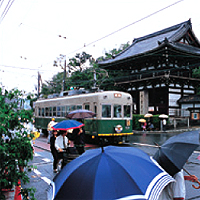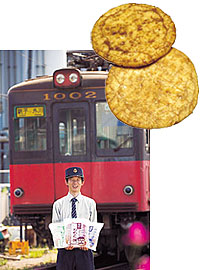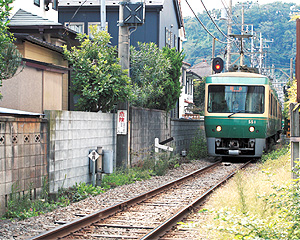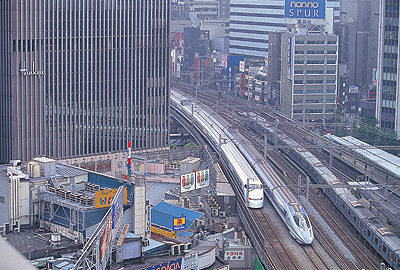Special Feature![]() Travel Japan by Train
Travel Japan by Train
Riding the rails for everyday convenience

Electric tram on the Arashiyama Main Line operated by Keifuku Electric Railroad. Here the tram is passing through northwestern Kyoto. Uzumasa Koryu-ji Station has no station attendant, but plenty of people get on and off because it is close to Kyoto’s oldest temple, Koryu-ji (top right of photo), and to the popular Toei Movie Land.

The little railway saved by rice crackers
Cape Inubo-saki (Chiba Prefecture) juts out into the Pacific Ocean. Choshi Electric Railway will take you out close to the tip from JR Choshi Station on its only line, a single track just 6.4 km in length.
The company faced closure a number of times but has been saved by its nure-senbei rice crackers, a local specialty it began marketing in 1997. The nure-senbei are soft and moist, which is quite unusual for rice crackers, and even more unusual is the fact that a railway company is associated so closely with them. This attracted so much attention that orders now come in from all over the country. Small, one-track local lines are rare now in Japan, and railway buffs throughout the country are eager to keep the line afloat, at least by buying its food product.
Suzuki Kazunari works in the company’s General Affairs Department. “We sell about 20,000 crackers per day, and this brings in about twice the revenue we gain from railway operations.”
Tourists like the travel-all-day pass, which comes with one rice cracker for 620 yen. Clicketty-clacking down the track, eating a nure-senbei—another way to enjoy rail travel in Japan.


